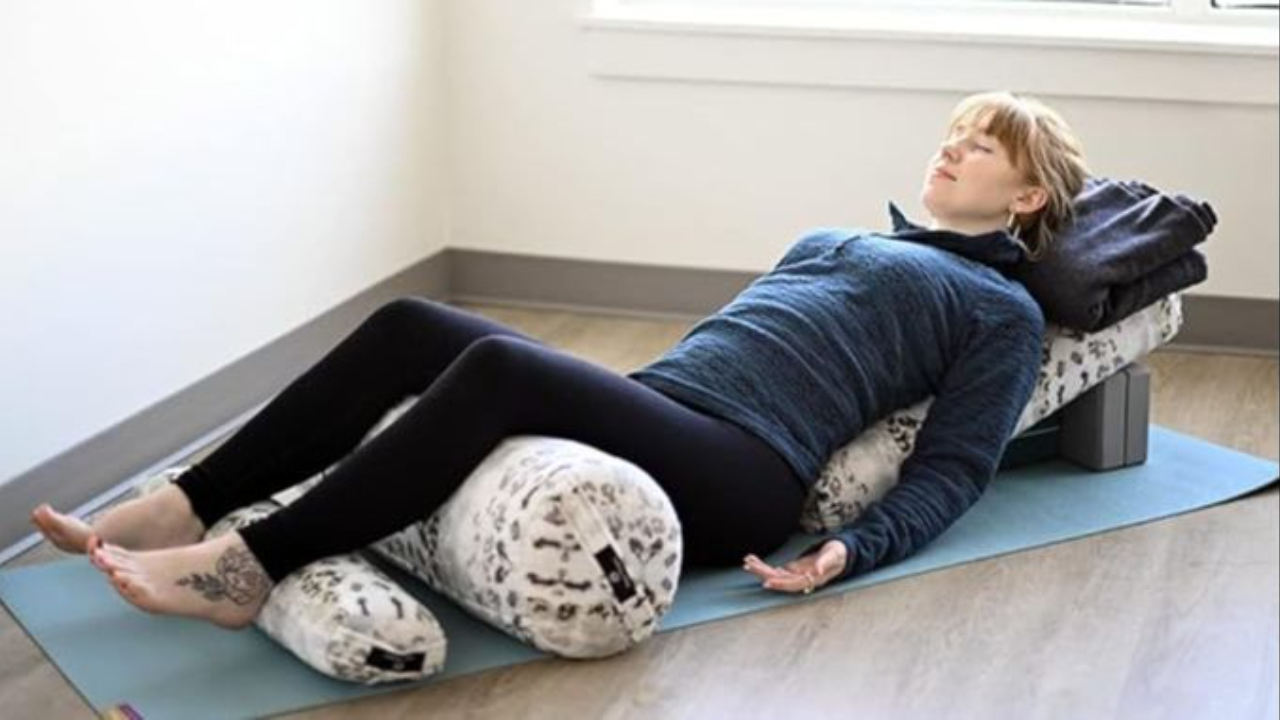
If you’ve ever thought, “Yoga isn’t for me,” you’re not alone. Many Highly Sensitive People (HSPs) have tried one class — maybe a crowded hot yoga studio or a teacher who pushed too hard — and left feeling even more overwhelmed.
But gentle yoga is different. It’s designed for people who want to slow down, listen inward, and move with compassion. You don’t have to be flexible or experienced. You just need curiosity and a willingness to show up for yourself.
Here’s how to start gentle yoga in a way that feels safe, supportive, and nourishing for your sensitive nervous system.
Step 1: Remember Your “Why”
HSPs often get caught in comparison — thinking yoga is about being the most flexible or looking a certain way in a pose. But that’s not the point.
Before you begin, take a moment to ask yourself: Why do I want to practice yoga?
-
Is it to find calm in the middle of your stress?
-
To give your nervous system a reset?
-
To practice self-compassion instead of self-criticism?
Whatever your reason, hold onto it. Your “why” will guide you back when your mind starts to wander or you feel discouraged.
Step 2: Create a Calm Space
Where you practice matters. As an HSP, your environment can either soothe or overstimulate you.
If you’re practicing at home, set up a corner that feels good to you. Dim the lights, turn off harsh sounds, maybe light a candle. You don’t need fancy equipment — a mat or even a blanket on the floor is enough.
If you choose a studio, look for classes labeled gentle, restorative, slow flow, mindful, or trauma-informed. The right environment can make a huge difference in how safe and supported you feel.
Step 3: Experiment with Different Formats
Gentle yoga doesn’t have to look one way. Try different settings and see what works for you:
-
Online yoga classes → Practice from the comfort of home, with the ability to pause or adjust anytime.
-
Private sessions → Work one-on-one with a teacher who understands HSPs and can adapt each pose to your needs.
-
Small groups → Experience connection and support without the overwhelm of a big studio.
-
Books or videos → Learn at your own pace, unplugged if that feels better.
-
Outdoor yoga → If nature soothes you, practicing outside can be deeply grounding.
Gentle yoga is flexible in more ways than one. Give yourself permission to choose what feels best, not what looks “normal.”
Step 4: Ask the Right Questions
If you’re considering joining a new class or working with a teacher, don’t be afraid to ask questions. The answers will tell you a lot about whether they’ll support your sensitive nervous system.
Here are a few to try:
-
“What if I need to do my own thing during class?”
-
“Do you use touch, and how do you ask for consent?”
-
“Are you familiar with working with HSPs or people with chronic stress?”
The way a teacher responds — not just their words, but their tone — will give you a sense of whether their space is right for you.
Step 5: Keep It Simple
You don’t need an elaborate routine to start. Even one or two gentle poses a day can help you feel calmer and more connected to your body. Try:
-
Legs up the wall for deep relaxation
-
Child’s pose to soften and release tension
-
Reclined twist to unwind at the end of the day
Pair your poses with slow, steady breathing. Even just five minutes can shift your whole nervous system.
Step 6: Let Go of Perfection
HSPs tend to be hard on themselves. You may feel pressure to “do yoga right” or stick to a daily routine. But gentle yoga is about self-compassion, not achievement.
Some days you’ll practice; other days you won’t. Both are okay. Every time you come back, you’re reminding yourself that you deserve care and kindness.
Why Gentle Yoga is Worth Trying
Gentle yoga isn’t about bending yourself into pretzel shapes or sweating through an intense workout. It’s about:
-
Finding calm when your nervous system feels overloaded
-
Learning to accept yourself, just as you are
-
Building resilience for the ups and downs of life
-
Practicing self-care in a way that feels natural, not forced
It’s one of the most supportive tools I know for Highly Sensitive People, because it meets you where you are and invites you to move at your own pace.
A Supportive Place to Begin
If you’re curious about starting gentle yoga, you don’t have to do it alone. Here are two inviting options:
-
The Compassion Club → my online membership where you’ll find gentle yoga, meditation, and community with other HSPs and empaths. You’ll be supported, encouraged, and reminded that you’re not alone.
-
Private Yoga with me, Kate Lynch → if you want personalized guidance and a practice tailored to your needs, private yoga is a beautiful way to begin. We’ll work together to regulate your nervous system and build a practice you can actually enjoy.
Gentle yoga is your permission slip to slow down, breathe, and care for yourself — exactly as you are. And as an HSP, that kind of support isn’t a luxury. It’s essential.
Stop Walking On Eggshells!
Gentle yoga to release your stress and shift your mindset about struggle.
If you get your buttons pushed often by other people's issues, you may be hypervigilant. You might feel it in your body as clenching, tension, or chronic pain.
You'll become more grounded in awareness of your body.

